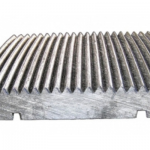Vital Things to Consider When Creating Alloy Steel Casting
Metal casting is an important process for modifying the shape of a specific metal. Whether you want to use the metal in large projects or small manufacturing processes, achieving the right design is paramount. Whatever casting procedure you select, each comes with different considerations. From overall shape to surface finish, you should ensure that the dimensions and quality of the metal are in top shape.
Choose the Suitable Casting Procedure
When it comes to iron casting, you can implement different types of procedures. These can give your metal the desired shape and offer you flexibility of use. From sand casting and centrifugal casting to investment casting, you can choose according to your needs.
Crucial Considerations for Alloy Steel Casting
When designing alloy steel, you must follow some crucial design considerations. These can help you choose the best casting process that suits your applications. The factors also contribute to the commercial and technical requirements of the customer.
- Metal Casting Shape: It is one of the most crucial design considerations in metal casting. If you have a part that is typically round, you can try centrifugal casting. If your alloy piece has a complex geometry with additional features, investment or sand casting can be the best choice.
- Dimensional Tolerance: In the casting process, dimensional tolerance is the permissible deviation from the desired measurements of your casting. Typically, investment castings achieve higher tolerances than other methods. Even for parts with fine detail and internal passageways, dimensional tolerance is vital. However, you can use other procedures like sand casting to navigate through complex geometries and intricate details.
- Shrinkage: When you perform alloy casting, you cannot ignore the shrinkage factor of the metal. Simply put, it is the contraction of molten metal during the cooling process. It is a crucial factor that protects casting dimensions and integrity. However, it can also cause unexpected changes in casting dimensions and create voids and pockets within the casting wall surface. You can calculate the dimensional shrinkage for individual metals, including steel. If you implement an investment or sand casting process, you can control the shrinkage with gating.
- Metal Casting Size: The casting procedures can define the overall size of the processed metal. If your casting is lower than 1200 pounds, you should consider the level of detail and overall geometry. This will make it easier to choose between sand casting and other procedures. Sand castings are generally available in a wider range of sizes than investment or other casting processes.
- Machining Requirements: During the metal casting design, you must consider the amount of the metal from the casting required to be removed by machining. This will help achieve the desired shape and features of the metal casting. Machining can add to the overall cost and time of the procedure.
These are a few crucial considerations to keep in mind while preparing alloy steel castings. If you require efficient assistance from professionals, contact Huston (India) Pvt Ltd. We are a 9001:2015 certified company specialising in the metal casting process. Over the years, we have been a trusted manufacturer, supplier, and retailer of alloy steel casting products. For more information, visit our website today.



